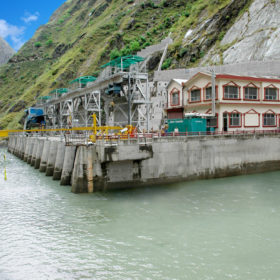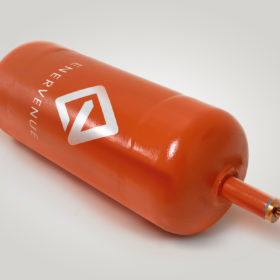India will require over US$ 10 trillion to achieve net-zero by 2070
Out of this, investments totaling US$ 8.4 trillion would be needed by the power sector alone to significantly scale up generation from renewable energy and associated integration, distribution and transmission infrastructure. Another US$ 1.5 trillion would have to be invested in the industrial sector for setting up green hydrogen production capacity to advance the sector’s decarbonization. Investment needed for the mobility infrastructure would be US$ 198 billion.
Land, power evacuation plan for 10 GW renewable energy project in Ladakh
Power minister recently chaired a meeting to discuss land availability and power evacuation plan for the 10 GW hybrid renewable energy project in the Leh district of Ladakh.
Hydropower producer SJVN to form solar and storage arm
The company’s board of directors have approved the formation of a wholly-owned subsidiary for solar PV, wind and hybrid power generation (including battery energy storage systems), green hydrogen, and other renewable energy ventures.
Compressed-air storage for commercial applications
Israel-based Augwind has built its first 250 kW/1 MWh compressed air storage system for the collective community of Yahel, in the southern, desert part of the country. The commercial scale facility will be connected to a PV system and will be used for behind-the-meter services.
Grid-scale battery storage and green hydrogen market shaping up in India
India has seen substantial activity in the domestic battery storage and green hydrogen markets, from the entry of Reliance and Acme Solar in green hydrogen to gigawatt-scale battery storage tenders by NTPC and the Solar Energy Corporation of India (SECI). There are more private ventures in the offing, indicating the government’s policy push is in the right direction.
SECI invites proposals for 1 GWh of battery energy storage systems
The draft guidelines and the draft tender document inviting bids for setting up standalone battery energy storage systems in India have been uploaded on the SECI site. The final tender document will be issued based on the comments and discussions with the prospective bidders on the draft guidelines and draft tender documents.
All-renewables power system with 76% solar share could halve electricity costs and drive net-zero by 2050
A power system modeling study, jointly carried out by Lappeenranta-Lahti University of Technology (LUT) and Wärtsilä, explores the feasibility of a net-zero-emissions power system in India by 2050. It shows that an all-renewables power system, when paired with flexible generation technologies (thermal balancing power plants and energy storage), can improve the affordability of electricity while ensuring the reliability of system operations.
Developer calls world’s largest solar+storage project ‘the first of many’ to come
The Australian-Singaporean group behind a proposed 20 GW solar PV farm and 42 GWh battery energy storage project under development in Australia’s remote far north has hinted that other, similar-sized projects are already in the pipeline.
Nickel-hydrogen battery for large scale renewables
U.S. start-up EnerVenue has secured funding to build a gigafactory to produce nickel-hydrogen batteries for large scale renewable and storage applications. The battery has an efficiency ranging from 80 to 90%, depending on the cycle rate, and its energy density per square foot is equal to, or better than lithium-ion batteries, according to the company.
Transmission system expansion, digitalization critical to Southeast Asia’s grid modernization
To achieve its sustainability targets, Southeast Asia will require integrated strategy and execution across generation, transmission, and distribution, as well as planning that balances both capital and operational expenditures. The regional power industry will need partners who can merge data analytics with engineering expertise to deliver timely and actionable insights that realize the full potential of assets and facilities.















